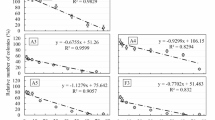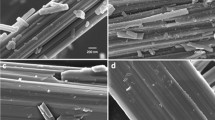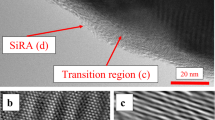Abstract
IN the preceding communication, Harington, Gilson and Wagner1 comment on the need to explain the big difference in the number of mesotheliomas reported from the crocidolite mining area of the north-western Cape compared with that in the Transvaal where both crocidolite and amosite are mined. Although the experimental results they quote can be accepted as evidence on the relative carcinogenicity of the various types of asbestos, the intra-pleural inoculation method used to introduce these materials does not take account of the natural factors involved when the fibres are inhaled.
This is a preview of subscription content, access via your institution
Access options
Subscribe to this journal
Receive 51 print issues and online access
$199.00 per year
only $3.90 per issue
Buy this article
- Purchase on SpringerLink
- Instant access to full article PDF
Prices may be subject to local taxes which are calculated during checkout
Similar content being viewed by others
References
Harington, J. S., Gilson, J. C., and Wagner, J. C., Nature, 232, 54 (1971).
Timbrell, V., Ann. NY Acad. Sci., 132, 255 (1965).
Timbrell, V., Pooley, F., and Wagner, J. C., in Pneumoconiosis, Proc. Intern. Conf., Johannesburg, 1969 (edit. by Shapiro, H. H.), 120 (Oxford University Press, Cape Town, 1970).
Wright, G. W., Amer. Rev. Resp. Dis., 100, 467 (1969).
Sluis-Cremer, G., Ann. NY Acad. Sci., 132, 215 (1965).
Author information
Authors and Affiliations
Rights and permissions
About this article
Cite this article
TIMBRELL, V., GRIFFITHS, D. & POOLEY, F. Possible Biological Importance of Fibre Diameters of South African Amphiboles. Nature 232, 55–56 (1971). https://doi.org/10.1038/232055a0
Received:
Issue date:
DOI: https://doi.org/10.1038/232055a0
This article is cited by
-
Surface charge and asbestos toxicity
Nature (1977)



